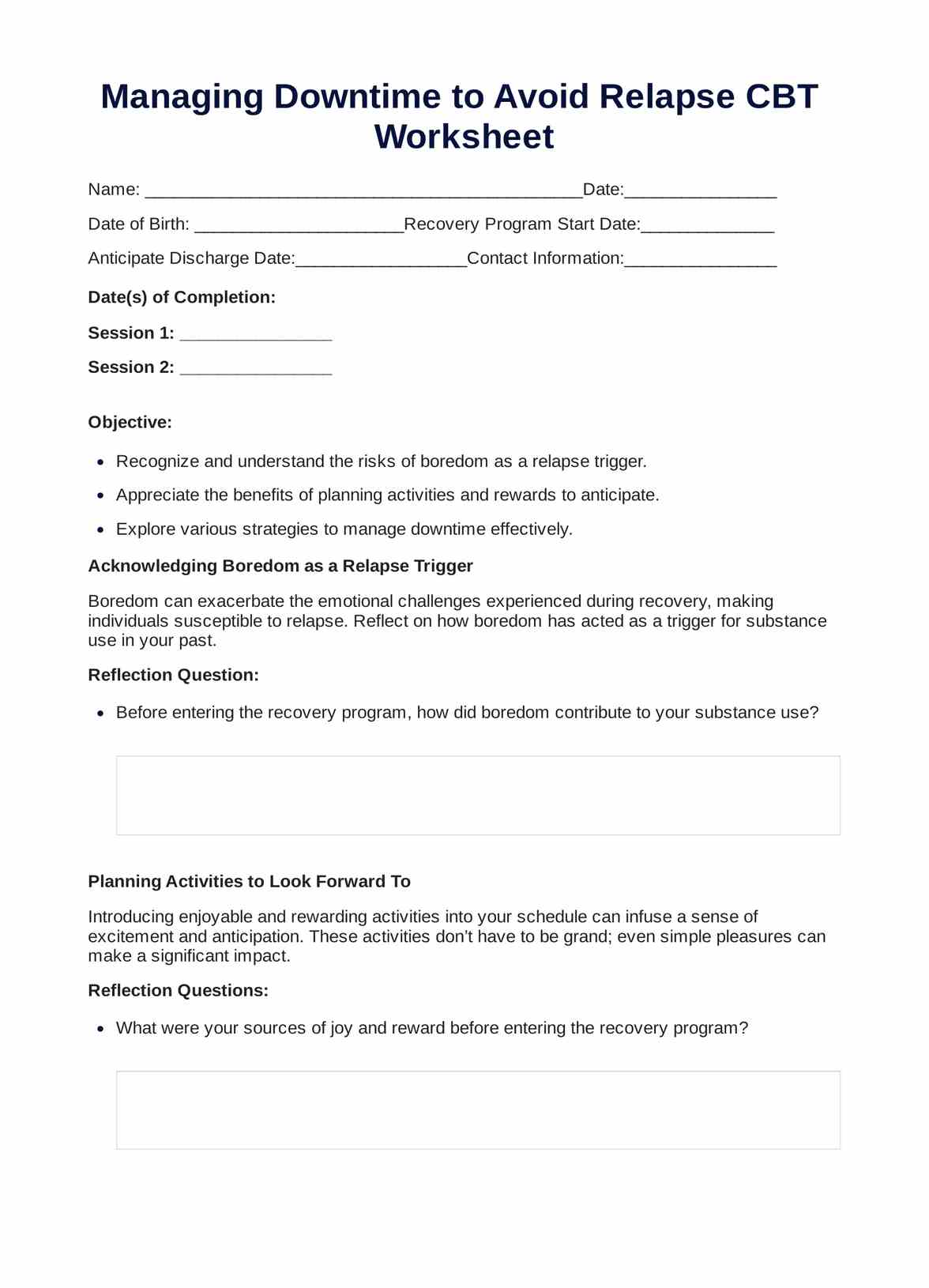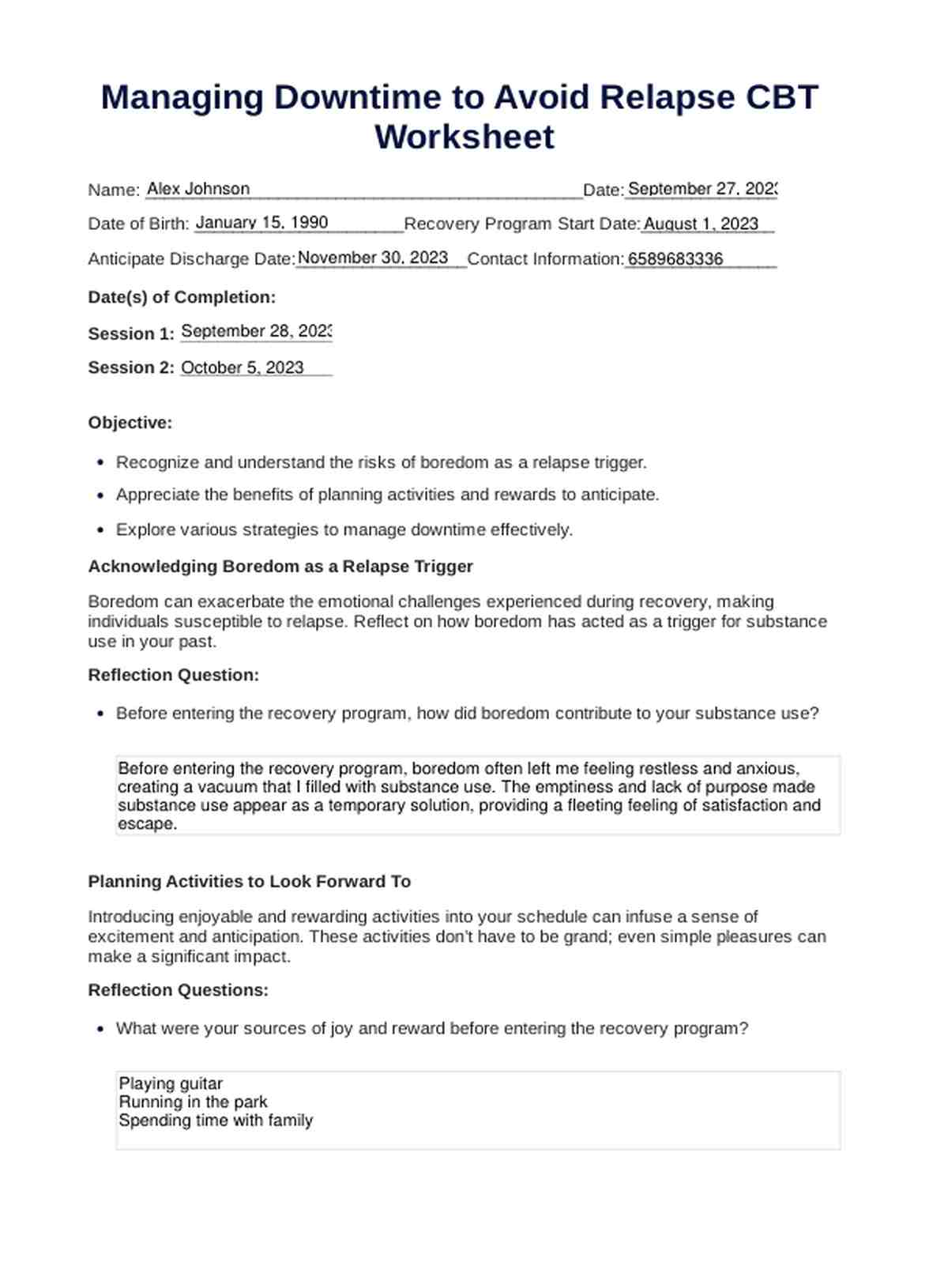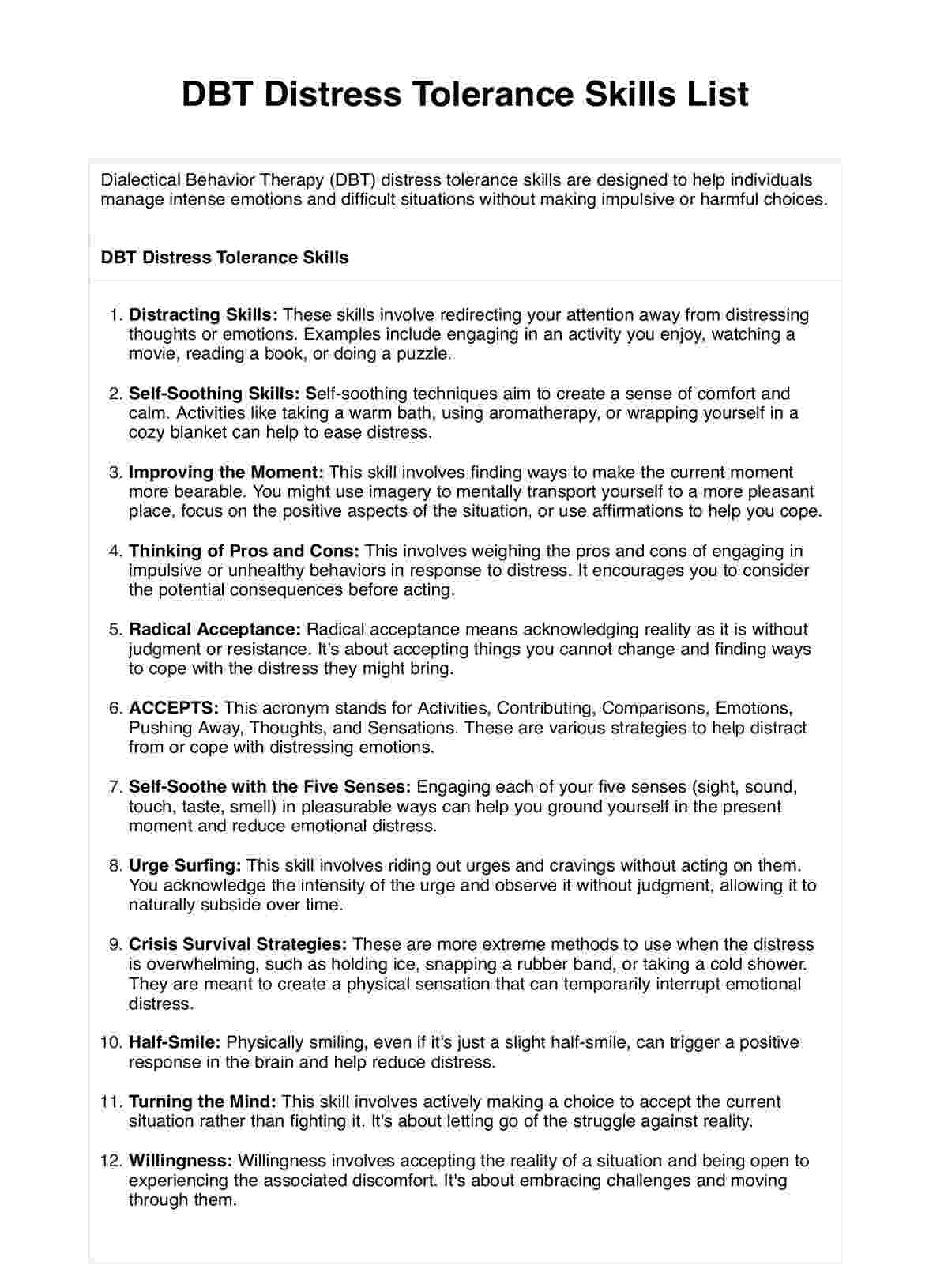Managing Downtime to Avoid Relapse CBT Worksheet
Use the Managing Downtime to Avoid Relapse CBT Worksheet to navigate recovery. It aids in identifying triggers and planning constructive activities.


What is Cognitive Behavioral Therapy?
Cognitive Behavioral Therapy (CBT) is a widely recognized form of psychological treatment that has been proven effective in addressing various mental and behavioral challenges. At its core, CBT focuses on the powerful interplay between an individual's thoughts, emotions, and actions. It operates on the principle that harmful thought patterns can lead to detrimental behavior or emotional responses.
In the context of substance abuse, CBT holds considerable value. This therapy aims to help individuals understand and acknowledge the intricate relationship between their thoughts, feelings, and behaviors and how these interconnected elements can contribute to substance use. Recognizing these links allows individuals to identify triggers leading to substance use and develop healthier, more constructive responses.
CBT is not a one-size-fits-all approach but rather a structured, goal-oriented process. It is customized to the individual's unique needs, with techniques and strategies varying based on the specific challenges the person is facing. This adaptive nature makes CBT a versatile tool in mental health care, particularly effective in managing issues related to substance abuse.
Through , individuals are equipped with the tools to replace maladaptive thought patterns with healthier ones, empowering them to change their behavior and, ultimately, their lives.
Managing Downtime to Avoid Relapse CBT Worksheet Template
Managing Downtime to Avoid Relapse CBT Worksheet Example
How To Use the Managing Downtime To Avoid Relapse CBT Worksheet
The Managing Downtime to Avoid Relapse CBT Worksheet operates on the principles of Cognitive Behavioral Therapy (CBT), empowering individuals to manage their downtime effectively and, thus, mitigate the risk of relapse. Here's a step-by-step guide on how to use the Managing Downtime to Avoid Relapse CBT Worksheet:
Step 1: Identifying Triggers
Begin by pinpointing potential triggers or circumstances that may provoke a desire for substance use. These triggers could range from certain people or places, stressful situations, or specific emotions. Identifying these triggers is crucial as it forms the basis for the next steps.
Step 2: Planning Activities
Once you've identified your triggers, the next step involves planning activities that will occupy your downtime. The goal is to engage in actions entertain you and serve as healthy distractions from cravings or triggers. Activities could include hobbies, exercise, socializing with supportive friends or family, or other constructive tasks.
Step 3: Implementing the Plan
The final step is putting your plan into action. Follow through with the activities you've planned during your downtime. It's essential to consistently evaluate the effectiveness of your project and make necessary adjustments based on your experiences and changing circumstances.
Our printable Managing Downtime to Avoid Relapse CBT Worksheet is a strategic approach to self-awareness and behavioral change. By actively managing your downtime, you're taking a proactive stance against relapse and making significant strides in your recovery journey.
When Would You Use This Managing Downtime To Avoid Relapse CBT Worksheet?
The Managing Downtime to Avoid Relapse CBT Worksheet is a valuable tool that can be utilized at various stages of recovery from substance abuse. Its primary function is to facilitate effective downtime management, which is often a challenging period for individuals in recovery.
One of the most critical times to use this worksheet is during periods of high stress or when experiencing intense cravings. These are instances when the risk of relapse is typically elevated, and having a strategic plan in place can significantly contribute to preventing such occurrences.
This worksheet is also particularly beneficial for individuals transitioning from structured treatment environments to their daily lives. This transition can be fraught with potential triggers as individuals reintegrate into their regular routines, making the Managing Downtime to Avoid Relapse CBT Worksheet an essential tool in maintaining the progress made during treatment.
Healthcare professionals, such as therapists, counselors, and addiction specialists, can use this worksheet to guide their clients. It can serve as a roadmap to help individuals develop personalized strategies to manage their downtime effectively. By identifying potential triggers and planning alternative activities, healthcare professionals can empower their clients to take control of their recovery journey.
The Managing Downtime to Avoid Relapse CBT Worksheet is a versatile tool that can be employed at different recovery phases. Its purpose is to equip individuals with the skills and strategies necessary to navigate their downtime constructively, minimizing the risk of relapse and promoting long-term recovery.
What are the Benefits of Using this Managing Downtime To Avoid Relapse CBT Worksheet?
Our free Managing Downtime to Avoid Relapse CBT Worksheet is a powerful tool in the recovery process. It not only assists individuals in identifying their triggers but also helps them strategize and plan for healthier ways to spend their downtime. Let's delve into the remarkable benefits this tool can offer:
Benefit 1: Amplified Self-Awareness
Enhancing self-awareness is an integral part of the recovery journey. This worksheet acts as a mirror, reflecting individuals' patterns related to their triggers and how they utilize their free time. This increased self-awareness can lead to more informed decisions and actions that support long-term recovery.
Benefit 2: Cultivating Robust Coping Strategies
One of the key elements to preventing relapse is having a solid set of coping strategies. This worksheet aids individuals in developing these strategies by encouraging them to plan healthier activities for their downtime. This proactive approach can significantly reduce the risk of relapse and promote overall well-being.
Benefit 3: Empowerment and Control
A sense of empowerment is crucial in the recovery process. Individuals take control of their recovery by completing the free Managing Downtime to Avoid Relapse CBT Worksheet. This active participation can increase self-efficacy, fostering a sense of empowerment and giving individuals the confidence they need to navigate their recovery journey successfully.
While there isn't specific research on this particular worksheet, studies have shown the effectiveness of Cognitive Behavioral Therapy (CBT) worksheets in general. For example, a study published in the Journal of Consulting and Clinical Psychology found that CBT worksheets can significantly improve outcomes for individuals with substance use disorders.
Commonly asked questions
The time required will vary depending on the individual, but generally, it should take between 20-30 minutes.
The worksheet can provide a structured approach to managing downtime and preventing relapse.
This worksheet is most useful during high stress or when experiencing solid cravings.
This worksheet can be used by individuals in recovery from substance abuse and healthcare professionals guiding their clients in relapse prevention.

.jpg)

















-template.jpg)






























































































